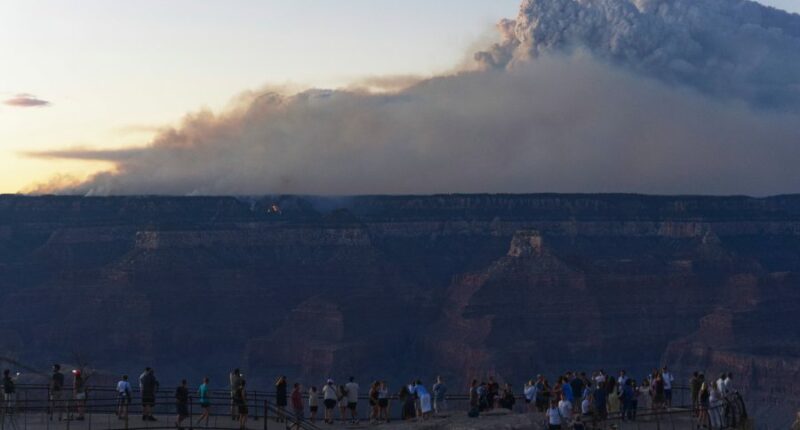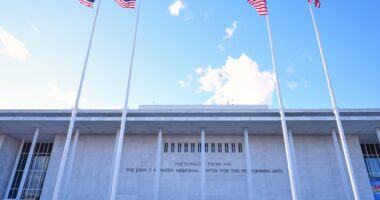Share this @internewscast.com

PHOENIX (AP) — A combination of extremely dry conditions and strong winds is posing challenges for teams trying to control a wildfire on the North Rim of the Grand Canyon. As a result, the fire has significantly expanded, nearly tripling in size over a few days while containment efforts have struggled.
Previously, crews had contained approximately 26% of the Dragon Bravo Fire. However, due to unfavorable conditions, containment has dropped to single digits, with the fire spreading to over 110 square miles (around 285 kilometers) by Tuesday.
The fire made one of its biggest runs on Monday as it raced across 25 square miles of terrain.
The fire is remaining active for longer periods each day, reducing the time firefighters have to gain control, explained fire spokesperson Lisa Jennings.
“The extremely dry air is just one aspect of the problem,” Jennings stated. “This season has been exceptionally dry, and we’ve yet to receive the monsoon rains that typically arrive in early July.”
Additionally, the type of trees, such as tall mixed conifers and ponderosa pines, along with the terrain of the rim, are aiding the fire’s expansion.
On Tuesday, crews continued to bolster defenses around the Kaibab Lodge, which is surrounded by national forest land. Managers were also monitoring a refuge for the Apache trout in the North Canyon and a bison herd in House Rock Valley.
The fire was sparked by lightning on July 4 and initially was managed to clear out vegetation to improve forest conditions. It wasn’t until a week later that dry and windy conditions helped to fan the flames, prompting evacuations of visitors and employees at Grand Canyon National Park’s North Rim. The historic Grand Canyon Lodge and dozens of cabins were destroyed. The rim remains closed for the season.
A bipartisan slate of Arizona’s elected officials has questioned the handling of the fire, suggesting more could have been done early on. Following an aerial tour of the damage, Gov. Katie Hobbs met with federal officials and said U.S. Interior Secretary Doug Burgum committed to an independent review.

















